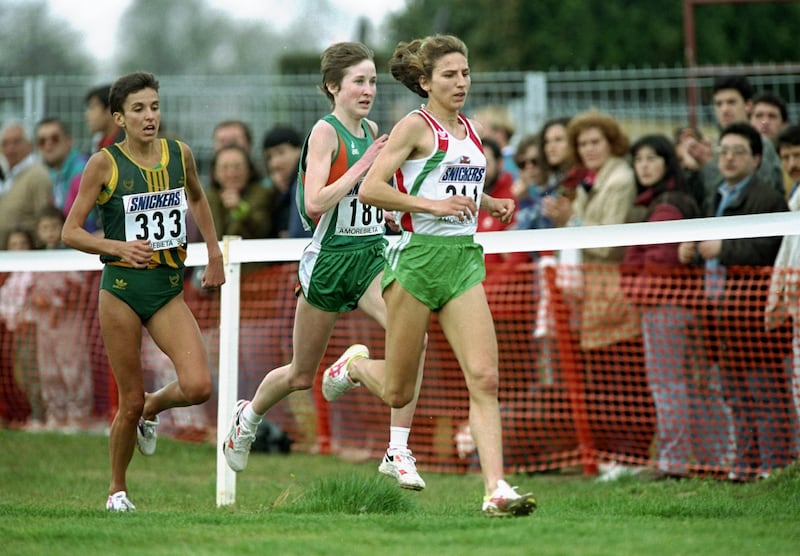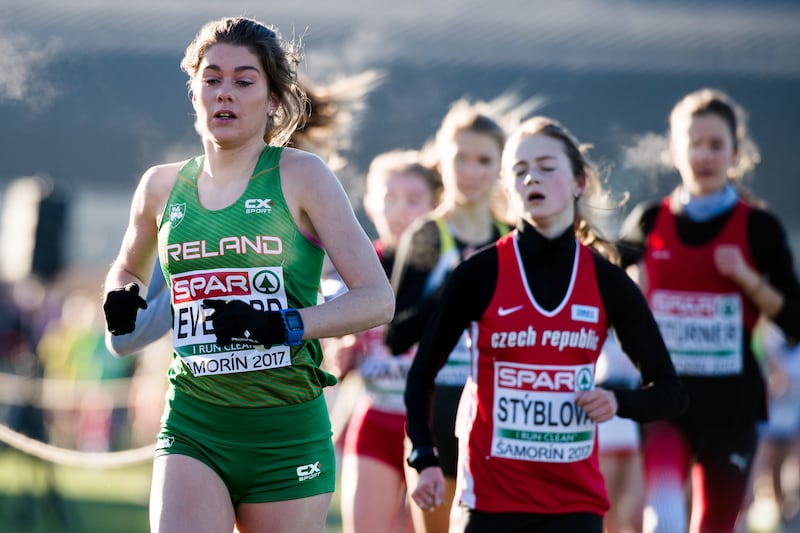Like many things in life there is something special about the first time. And even looking back 32 years now, there are lasting memories of my first time running the World Cross Country, in late March 1992 at a snowy Franklin Park in Boston.
Even in an Olympic year, there was no fear or hesitation of wanting to run. Ireland also sent full teams in the senior men and women, Catherina McKiernan winning the first of her four successive silver medals, and I was a few spots back in seventh.
The women’s team also placed fourth that day, just seven points behind Ethiopia, an achievement that probably wasn’t appreciated at the time.
It was the same in 2000 in Vilamoura, also an Olympic year, when I finished seventh again, and the team placed fourth again, this time just three points behind the USA. Another result that was not really appreciated.
READ MORE
Just six months later, there were three Irish women in the 5,000m at the Sydney Olympics. This was also a time when the World Cross Country was one of the most attractive races of the year, especially for me. I always wanted to know where I was at, and what work still needed to be done.
In 1998, after winning the then short- and long-course races in Marrakesh, I also had one of my best summers on the track. This was also a time when the World Cross Country was a rite of passage for distance runners embarking on the international stage.
Now 32 years on from Boston, the event returns to Europe this Saturday, Belgrade hosting the championships after a trip Down Under to Australia in 2023, those championships were originally postponed because of Covid-19. Since 2011, the event has also gone biannual, although even with it back on European ground, this hasn’t really encouraged more European teams to line up or even have individuals representing their countries.
Spain, France, Britain, Ireland, Sweden, Norway and the host nation will have some level of representation, but not full teams.
Often described as the most difficult race to win, it brings together on one single start line a wide spectrum of abilities, from the milers to the marathoners. From its inception back in 1973, the event has had a rise and fall in the number of athletes competing, from a high of 806 athletes 24 years ago in Vilamoura, when there were still the short- and long-course races.

That’s now dropped to 485 who entered the race in Belgrade, though up from 388 that competed in Australia last year.
Even though the depth is not what it used to be, the standard at the front of the field remains as high as ever. Kenya is the most successful team and each year they field athletes that go on to even greater success on the track and road at the World Championships, the Olympics, and World Road Running Championships.
The traditionalists always viewed cross country as the strength base that athletes needed to focus on in the winter. But the world of athletics is changing now, and cross-country racing throws up too many unpredictable variables for athletes and coaches who are increasingly reliant on very specific details in their training.
There may also be an issue with the date, with the next championships in Tallahassee, Florida in 2026 set for January 10th.
Just like the seasons seem to be shifting each year, maybe the athletics calendar needs a little shift to the left, and pull back the World Cross Country with the track season already up and running in March.
Serbia, this year’s host nation, has only ever competed in the event once, in 2011, when Amelia Terzic finished 32nd in the junior women’s race. This is also in contrast to Australia, who hosted the event last year, fielding full teams and many of their best runners, while also winning four medals.
Since 1973, Ireland has won 14 medals, and is ranked 14th on the medal table. Most athletes want to compete in front of a home crowd, which can help raise their game and deliver a result, like it did for us in Leopardstown in 2002, winning bronze medals in the team race.
I was running that day just three months after my daughter Sophie was born, but it was important to me to race at home, and be a part of a team that was excited to race.
It’s not just about winning medals. These are moments that you never forget, more important than running fast times or saving yourself for other events that may not even happen.

The loss of appeal in some cases is also down to the growth of lucrative road races and marathons, and also the incentive to chase early season times on the track to qualify athletes for the Olympics and World Championships.
But there is still plenty evidence that an athlete who competes well in the World Cross Country will set themselves up for a strong track season.
But it might also be time in introduce an under-23 race, make it more developmental, as this is where many athletes get their introduction to international competition.
Since 2017, they’ve also gone for gender balance in that the men’s and women’s races are now both 10km; but I think 10km is too long for the women, makes it less appealing for 1,500m and even 5,000m runners, and also increases the likelihood the east Africans will simply run away with it.
It’s a more exciting race if shorter, keeps more athletes in it for longer, and more opportunity for countries to field full teams, and maybe with the European style team of three to score, not four.
It’s so much more motivating to dig deep if part of a team, rather than send just a few individuals with no real idea what to aim for.
Ireland has eight runners on Saturday; Hugh Armstrong and Keelan Kilrehill in the senior men’s race, Fiona Everard and Danielle Donegan will contest the senior women, with Anna Gardiner, Kirsty Maher, Séamus Robinson and Harry Colbert in the under-20 races.
It’s also important to stage the event in countries that understand the sport, have an emotional connection with the history, and believe in the future of the World Cross Country.
The correlation between racing cross country, being exposed to the toughest race you will ever face, as a stepping stone to success on the track is something that is lost on a lot of athletes and coaches.
It also seems less athletes are willing to take a risk on the uneven surface and undulating terrain, and there needs to be a carrot to excite athletes to take part and experience the grassroots of the sport, where many have their first taste of truly competitive running.
















